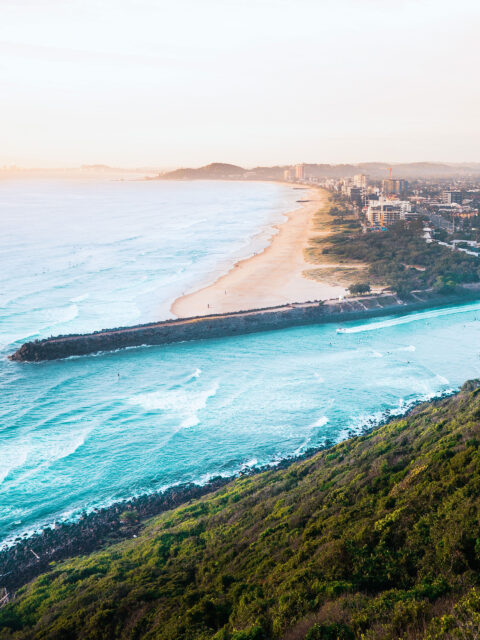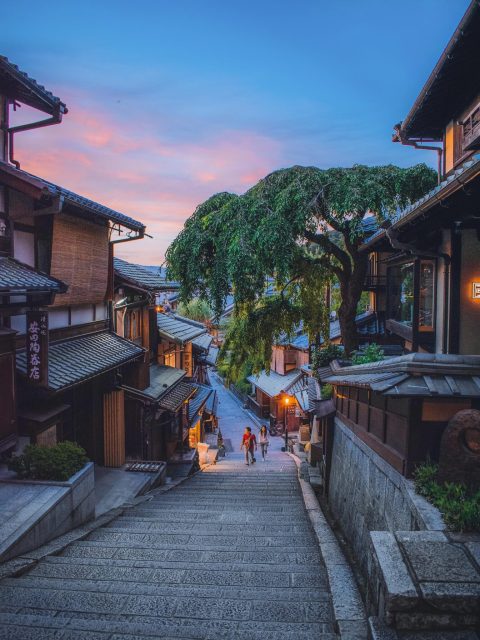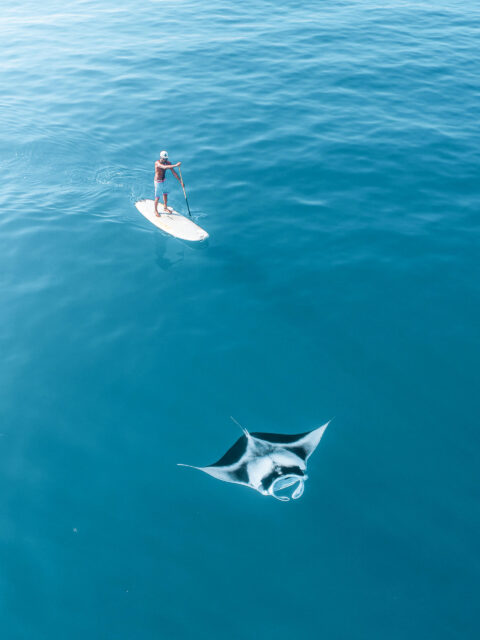10 Best Things to Do in Rio de Janeiro, Brazil
As the second-largest city in Brazil and a top destination for travelers, Rio de Janeiro offers more than just the famous Copacabana Beach or the Rio Carnival. Whether you’re looking for iconic attractions or hidden gems, this guide covers the best things to do in Rio de Janeiro. My first impression upon arriving in the city was how it perfectly combines vibrant urban life with stunning natural beauty. From rainforest-covered mountains and scenic coastlines to unique rock formations and the serene Lagoa lagoon, Rio de Janeiro has it all.
What makes it even more special are the countless vantage points that provide panoramic views of the city, making it easy to understand why Rio de Janeiro is often recognized as one of the best things to do in South America. This place captivates with its combination of nature, culture, and history, creating an unforgettable experience for every visitor.
Chapters
- 10 Best Things to Do in Rio de Janeiro, Brazil
- 1. Relax at Copacabana Beach & Ipanema Beach
- 2. Admire the Christ the Redeemer (Cristo Redentor)
- 3. Enjoy the Views from Morro da Urca and Sugarloaf Mountain
- 4. Have Brunch at Parque Lage
- 5. Wander around the Botanical Garden (Jardim Botânico)
- 6. Marvel at the Selarón Steps (Escadaria Selarón)
- 7. Join a bloco at Brazil’s Carnival
- Best Time to Visit Rio de Janeiro
10 Best Things to Do in Rio de Janeiro, Brazil
Rio de Janeiro, often referred to as the “Marvelous City,” offers far more than just its famous beaches and Carnival. The city’s name, meaning “River of January,” was given by Portuguese explorers when they arrived on its shores in 1502. Though Rio served as the capital of Brazil for nearly two centuries, the vibrant energy and cultural significance of the city have remained intact even after the capital moved to Brasilia in 1961.
The city’s iconic skyline, with landmarks like Christ the Redeemer and Sugarloaf Mountain, draws millions of visitors each year. Yet, there’s much more to discover beyond the postcard-perfect views: stunning architecture, thrilling outdoor adventures, and hidden gardens. Whether you’re drawn to the well-known sights or prefer to explore off the beaten path, Rio de Janeiro offers something for every traveler. Here are 10 must-see experiences to add to your itinerary in this Atlantic gem.
1. Relax at Copacabana Beach & Ipanema Beach
No trip to Rio de Janeiro is complete without visiting its world-famous beaches. Among the many stunning stretches of sand, Copacabana Beach and Ipanema Beach are must-visit spots for an authentic Rio experience.
To truly soak in the vibe, rent a chair, dig your toes into the soft white sand, and get ready for a relaxed day by the Atlantic. You won’t even need to leave your seat, as vendors will come to you offering everything from bikinis, sarongs, and jewelry to snacks like grilled cheese, fresh fruit, and crispy chips. You can also enjoy refreshing drinks like ice-cold coconuts, beers, or Brazil’s iconic cocktail, caipirinha, all delivered to you from nearby beach kiosks known as barracas.
For a more active experience, you can join the locals in a game of beach volleyball, surf the waves, or take a jog along the shore. While Copacabana Beach is known for its lively atmosphere, Ipanema Beach offers a more peaceful, cleaner setting with upscale bars and restaurants. Plus, Ipanema boasts stunning views of the famous Two Brothers Mountain (Morro Dois Irmãos), especially at sunset.
If you’re in search of romance, head to the Arpoador Peninsula at the east end of Ipanema. It’s one of the best places in Rio to watch the sun set behind the Two Brothers Mountain, where both locals and tourists gather each evening for this beautiful sight. Bringing a picnic blanket and some wine would make the experience even more memorable.
While enjoying the beach, remember to keep an eye on your belongings and be mindful of your surroundings. And when it comes to swimwear, the tiny bikinis that locals wear are the norm, so don’t be surprised if your regular bikini feels conservative by comparison!
2. Admire the Christ the Redeemer (Cristo Redentor)
The towering Christ the Redeemer statue, perched atop Corcovado Mountain, is without a doubt one of the most iconic landmarks in Rio de Janeiro. As one of the New Seven Wonders of the World, it’s also the city’s most visited tourist attraction, drawing millions of visitors each year.
To reach the statue, you have several options. You can take a van, ride the scenic tram, or hike through the lush Tijuca Forest National Park. The hike, while adventurous and rewarding, can be quite challenging and typically takes about two hours to complete. As much as we enjoy hiking, we decided to skip the trail after hearing about a few unfortunate incidents involving tourists on the path. Instead, we opted for the tram. I recommend booking your tram tickets online in advance to avoid long queues – the ride itself is a pleasant 20-minute journey with stunning views as you ascend.
Once at the top, you’ll be greeted by the impressive Art Deco sculpture, with Christ extending his arms in a gesture of peace over the city below. It’s a powerful sight and truly one of the most awe-inspiring views you can experience in Rio. Be prepared for crowds though – this is a popular spot, and finding a moment for the perfect photo can require some patience. If you’re aiming for fewer crowds, try to arrive as early as possible.
Beyond the statue itself, the panoramic views from the summit are breathtaking. On a clear day, you can take in sweeping vistas of Rio de Janeiro’s famous beaches, the Sugarloaf Mountain, and Lagoa Rodrigo de Freitas. It’s worth checking the weather before you go – visiting on a sunny day can make all the difference in terms of visibility. On our first attempt to visit the Christ the Redeemer, the summit was completely shrouded in clouds, so we had to reschedule. Fortunately, the next day the skies cleared up, and we were treated to a slightly hazy but still magnificent view of the city spread out below.
3. Enjoy the Views from Morro da Urca and Sugarloaf Mountain
Tucked away on a small peninsula, the Urca neighborhood gave me a completely different vibe compared to the rest of Rio. It felt calm and peaceful, almost like a cozy little suburb, yet it’s only a short distance from the bustling Copacabana. With no skyscrapers, no heavy traffic, and far fewer people, life in Urca seems to move at a much slower pace.
Within this tranquil neighborhood, you’ll find the famous Sugarloaf Mountain (Pão de Açúcar), a towering 400-meter (1300 ft) granite peak that stands as one of the city’s most recognizable landmarks. In front of it sits the smaller Morro da Urca, often called the ‘first stop’ on the way up to Sugarloaf.
There are a couple of ways to reach Sugarloaf Mountain. You can either take the scenic cable car ride or, if you’re feeling adventurous, you can climb the mountain itself. As for Morro da Urca, you can also reach it by cable car, or enjoy a 30-minute hike through the jungle.
Since we were in the mood for some physical activity, we chose to hike up Morro da Urca. Along the way, we encountered beautiful blue butterflies, lively lizards, and the adorable marmoset monkeys. Just keep in mind that touching or feeding these monkeys is prohibited, as they can carry diseases and are considered an invasive species in the area.
Though the hike is relatively short, parts of the trail are steep and slippery, so I recommend wearing shoes with good grip. Once you reach the summit, you’ll be greeted by stunning views of Rio de Janeiro, and there are plenty of shops and restaurants to relax in. We treated ourselves to a refreshing açaí smoothie, found a bench, and took a moment to soak in the breathtaking scenery. After a sweaty hike in 35°C heat, it was the perfect way to unwind!
If you’re feeling fancy and want to splurge, there’s even the option to take a helicopter ride over Rio from Morro da Urca. Flights range from 6 to 12 minutes, offering incredible aerial views of the city.
For an even more stunning view, especially at sunset, you can take the cable car from Morro da Urca up to the summit of Sugarloaf Mountain. Just like with the Christ the Redeemer, visiting on a clear day will make the experience far more rewarding. If you’re short on time, you can even visit Sugarloaf, Morro da Urca, and the Christ the Redeemer all in the same day. There are also several guided tours available for those who prefer a more organized experience.
4. Have Brunch at Parque Lage
One of the hidden gems in Rio de Janeiro that doesn’t seem to feature prominently in most travel guides is Parque Lage. I was surprised to find that this beautiful park isn’t considered a top attraction, but for me, it was an unforgettable experience. Perhaps part of my excitement comes from the fact that my childhood heroes, Snoop Dogg and Pharrell, filmed a music video here, but regardless, Parque Lage is a must-visit spot.
Located at the base of Corcovado Mountain, Parque Lage is a tranquil public park where you can stroll through lush tropical forests, listen to the birds sing, and even spot monkeys jumping from one jackfruit tree to another. As you explore, you’ll come across unique features like a mysterious tower, a cave, and an old aquarium. With its dense greenery and relatively small number of tourists, the park provides a peaceful retreat from the bustle of the city. The best part? Admission is free.
When we visited, it was raining, so we didn’t get to enjoy the park under the bright blue skies. I can only imagine how much more magical it looks on a sunny day.
The highlight of the park, though, is the stunning colonial-style mansion that once belonged to Brazilian entrepreneur Enrique Lage. This grand building was transformed into a public space in the 1960s and is now a popular spot for visitors. The centerpiece of the mansion is a beautiful courtyard with towering columns surrounding a turquoise pool, creating a picturesque setting. Plage Café, a cozy little café located inside the mansion, is the perfect spot for brunch. The prices might be a bit steeper than usual, but the romantic atmosphere more than makes up for it.
Pro tip: Arrive early to beat the crowds and secure a good table at the café. The pool area is a popular photo spot, and if you arrive too late, you’ll likely have to wait in line to snap a picture.
Interestingly, when we tried to take photos with our camera inside the mansion, we were asked to switch to using our phones instead. I’m still unsure why that rule is in place, but if anyone knows, feel free to share in the comments!
5. Wander around the Botanical Garden (Jardim Botânico)
Another peaceful green space in Rio de Janeiro is the Botanical Garden (Jardim Botânico), located just about a kilometer away from Parque Lage. Established by a Portuguese king over 200 years ago, the garden covers around 140 hectares, with 40% of the area cultivated and the rest left as wild Atlantic forest. When we visited, it was unfortunately raining, so our photos turned out a bit gloomy. I’m already looking forward to going back on a sunny day to see the garden in all its glory!
You can easily spend 2-3 hours wandering around and exploring the incredible variety of flora, both from Brazil and from other countries around the world. For instance, there are 900 species of palm trees alone! As you stroll through the Japanese garden, cactus garden, and bamboo forest, you’ll come across some truly unique sights, like the massive water lilies from the Amazon region. Among the most popular spots in the garden are the two avenues lined with towering palm trees, which are often featured in photographs.
Beyond the lush plant life, the Botanical Garden is also home to a variety of wildlife. We spotted marmosets and a few large, stork-like birds roaming around, but if you’re lucky, you might also see toucans, brightly colored birds, different species of monkeys, and even sloths!
Entrance to the Botanical Garden costs 67 Reais (around 13 USD) for foreign visitors, so remember to bring cash, as credit cards aren’t accepted.
If I have the chance to visit the Botanical Garden again (which I hope I will), I’d definitely consider taking a guided tour. Learning more about the exotic plants and wildlife would add an extra layer of appreciation for the incredible biodiversity on display.
6. Marvel at the Selarón Steps (Escadaria Selarón)
Between the neighborhoods of Lapa and Santa Teresa, you’ll find one of the most colorful spots in Rio de Janeiro, the Selarón Steps (Escadaria Selarón). This stunning artwork features 215 mosaic steps in vibrant shades of green, blue, and yellow, representing the colors of the Brazilian flag. The red walls lining the sides of the staircase are adorned with tiles from all over the world, creating a truly unique visual experience.
As a fan of Snoop Dogg and Pharrell, I had always wanted to visit this iconic spot after seeing it in their music video, so finally getting the chance to explore Escadaria Selarón was a real treat!
The steps are a major draw for tourists, and during the day, you’ll often see people lining up at the base of the stairs for a photo. If you’d prefer to skip the wait, head further up the steps where you can capture equally great pictures, just without the famous “Escadaria Selarón” sign.
The Selarón Steps were created by Chilean artist Jorge Selarón, who lived on the same street. He started covering the deteriorating steps with colorful tiles in 1990. As the project gained attention, fans from around the world began sending tiles to contribute to the evolving masterpiece.
Selarón spent 20 years of his life dedicated to this project, describing it as his tribute to the people of Brazil. Tragically, the artist was found dead on the very steps he brought to life in 2013, marking a sad conclusion to his incredible legacy.
7. Join a bloco at Brazil’s Carnival
What could be better than starting your Saturday morning at Brazil’s Carnival by joining a bloco and opening your first beer at 8 am? We decided to join one in the Santa Teresa neighborhood called Céu na Terra, which translates to “Heaven on Earth.”
Blocos are massive street parties that take place during the pre-carnival and carnival season in Brazil (February/March). If you’re lucky enough to be in Rio de Janeiro during this time, joining a bloco is a must. It’s one of the best experiences you can have in Rio. A bloco typically revolves around a lively street band that parades through the streets, followed by thousands of locals, known as Cariocas, dressed in colorful costumes and covered in glitter, dancing and celebrating.
Be prepared to sweat more than you ever thought possible. In the narrow streets of Santa Teresa, packed with people and with little breeze, the temperature felt like it was hitting 40°C! Even my GoPro overheated, and the battery became so hot you could probably fry an egg on it. If you plan to join a party this wild, make sure to stay hydrated. We saw a few people who looked like they were about to faint from the heat.
During the bloco, locals frequently reminded us to be cautious with our belongings. It’s best to wear your backpack on your chest instead of your back. Although nothing happened to us, it’s always good to stay alert in large crowds since the chance of pickpocketing can increase.
P.S. If you’re interested in exploring other party scenes across the continent, don’t forget to check out some of the best party destinations in South America.
Best Time to Visit Rio de Janeiro
The best time to visit Rio de Janeiro is from February to April when the weather is warm and sunny, and rainfall is not too heavy. From May to October, the skies are clearer, but temperatures can be cooler, dropping to around 15°C (59°F). If you’re not a fan of intense heat or don’t plan to spend much time at the beach, visiting during these cooler months can be a great option.
For those looking to experience the world-famous Carnival, plan your trip for late February or early March. Just be aware that accommodation prices tend to be higher during this period due to the festival’s popularity.
I visited Rio in February, which is the hottest time of the year, with temperatures reaching up to 35°C and occasional rain on some days.
That wraps up some of the best things to do in Rio de Janeiro, a city that truly captivated me and one that I can’t wait to return to someday.
Have you ever been to Rio or are you planning a trip there? If you have any questions about preparing for your trip or tips on how to make the most of your time in Rio, feel free to leave a comment. I’ll do my best to answer and help you plan an unforgettable experience.















